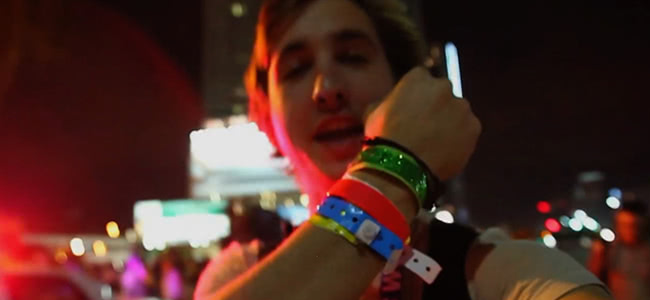No Cameras Allowed is the 2014 documentary that chronicles the four-year journey of accidental concert photographer James Marcus Haney, as sneaks into nearly 50 music festivals around the world, including Coachella and Glastonbury.
While the film has garnered acclaim as a heartfelt expression of the joy and wonder of attending a music festival and an ode to the carefree nature of youth, it’s also garnered a fair share of criticism for perceived inconsistencies in Haney’s story.
After the trailer for the film spread like wildfire online, a popular reddit thread sprung up which asked the question: “Is this upcoming documentary about a concert photographer real or fake MTV crap?”
Writing for PetaPixel, professional concert photographer Matthias Hombauer admits he doesn’t know whether or not No Cameras Allowed is on the level, but points out several things that just don’t seem to add up.
“Most of us want to live this dream, and No Cameras Allowed makes it seem so easy,” the Austrian snapper writes. “By faking Coachella festival wristbands, Marcus Haney snuck under security’s radar and filmed footage that he made in the photo pit.”
“The film trailer also shows that he went on stage to shoot exclusive footage with his press wristband, and that afterwards, bands saw his footage and immediately took him on tour.” This is where things get a little too farfetched for Hombauer.
The photographer, who’s shot for the likes of Iggy Pop and The Prodigy, is incredulous about Haney’s ability to get such easy access to private, high-security areas of music festivals simply by crafting a fake wristband.
“The trailer makes it seem as though Haney could enter the stage with his faked wrist band and shoot directly on stage… There is no way you can enter the stage without knowing the tour manager or the band,” he writes.
“A normal wrist band won’t do the trick — you’ll need an AAA (access all area) pass. We are talking about stars like Jay-Z in the film! You think everyone with a faked press pass can just go on stage and shoot there?”
Footage from the film also features lengthy, high-definition shots of performances with audio, despite Haney only ever being shown using hand-held cameras — in many cases an 8mm film camera — with no microphones attached.
[include_post id=”412890″]
“Most of the trailer shows high quality film footage shot from above (the shots might be from an aerial POV or crane), on stage action, and musicians smiling into the camera. Maybe he also faked a Coachella technician crane pass? Oh, and why is the film produced by MTV again?”
“In general you’re only allowed to shoot from the photo pit for the first three songs — afterwards you get kicked out of this area,” Hombauer writes. “Even the biggest TV team is just allowed to film a couple of seconds and sometimes even without recording live audio.”
Ultimately, Hombauer concludes, “It doesn’t really matter if No Cameras Allowed is fake or real. What matters is the fact that Marcus Haney is getting respect from media and musicians for doing things dishonestly and [possibly] illegally.”
“For me, Marcus Haney is just the puppet who fakes being the music photographer who can live his dream by faking wristbands. If the story is actually true, then congrats to him for being such a marketing genius.”




































